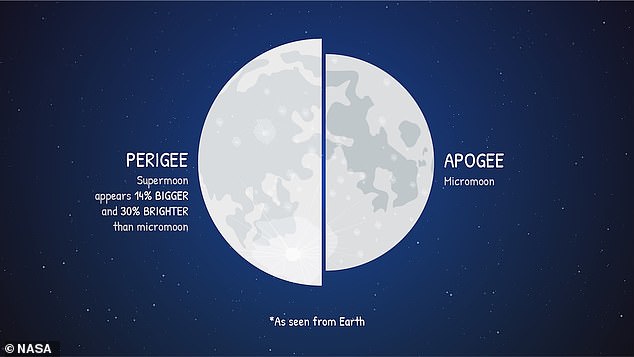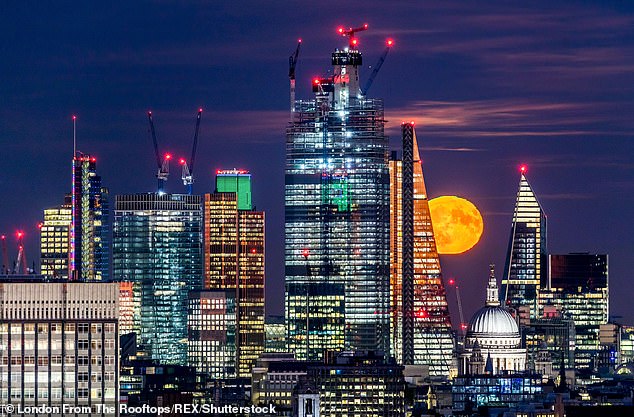The final supermoon of 2023 rises this week – how and when to see the lunar phenomenon from the UK
>
This week is the last chance of the year to catch a glimpse of a spectacular supermoon, so make sure you know how to spot this rare astronomical event.
Friday night will be the last in a rare series of four supermoons for 2023 and will be your last chance to spot one until September 2024.
Stargazers and amateur astronomers alike can rejoice, as the moon will be extra bright and large in the sky and rise earlier than normal.
In Britain, sunset will be at 6.45pm on Friday, with the moon expected to rise shortly afterwards. So just step outside and look skyward to make the most of the last supermoon of the year.
The moon will be big and bright enough to be seen clearly with the naked eye from anywhere in the country, but don’t forget to bring binoculars if you want to see some of the amazing details of the moon’s surface.
This week is the last chance of the year to catch a glimpse of a spectacular supermoon, so make sure you know how to spot this rare astronomical event
What is a supermoon?
A supermoon is a full moon that occurs when the moon is almost as close to Earth as it can get.
The moon does not orbit the Earth in a perfect circle, but follows an ellipse as it moves through its 27.3-day cycle.
This means that during one lunar orbit, the distance between Earth and the moon varies between 252,719 miles (406,712 km) at the farthest point, or apogee, and 221,484 miles (356,445 km) at the closest point, perigee.
A supermoon is generally defined as a full moon that occurs when the moon is more than 90% of its perigee.
However, some scientists dislike the term “supermoon” as it was coined in 1979 by astrologer Richard Nolle.
Mr. Nolle was also responsible for spreading the idea that supermoons cause earthquakes, volcanoes and influence human behavior – theories that have been thoroughly debunked by scientific research.
Astronomers often prefer the term “perigee syzygy,” defined as a full moon that occurs when the moon’s center is less than 220,000 miles (360,000 km) from Earth.
This week’s full moon is also the first full moon after the autumnal equinox, meaning it will be a Super Harvest Moon.
The Harvest Moon is extra bright and rises earlier than normal, so named because it allowed farmers to work late into the night to harvest crops in preparation for the coming winter.

During one lunar orbit, the distance between Earth and the moon varies between 252,719 miles (406,712 km) at the farthest point, or apogee, and 221,484 miles (356,445 km) at the closest point called perigee.
What makes a supermoon special?
Super moons are a rare event because the moon’s orbit and phase cycle are not in sink, so a full moon does not often correspond to perigee.
During a supermoon, the moon appears 14 percent higher and about 30 percent brighter than normal
Since Friday’s supermoon occurs 32 hours and 52 minutes after the moon passes its closest point, the moon could be only seven percent larger and 15 percent brighter, making the difference difficult to see with the naked eye.
When you see the moon rising over the horizon it may appear as if it is much larger than normal, but this is due to something called ‘the moon illusion’.
This effect makes the moon appear much larger to us when it is low on the horizon, even though it remains exactly the same size all night long.
Scientists don’t agree on what exactly causes the moon illusion, nor do they have a good explanation for why it occurs so consistently, even for astronauts looking at the moon from the ISS.

You’ll have to wait a while to catch the next supermoon, the next one won’t happen until September 18, 2024
Some theories suggest that this is because our brains expect objects on the horizon to be further away and therefore appear smaller.
Because the moon remains the same distance from Earth, our brains may over-correct for how far away the moon appears, making it appear larger than reality.
Other theories claim that the effect may be related to the moon’s comparison with foreground objects such as trees and buildings.
With dry weather forecast for much of the country next Friday, this could be a great opportunity to put this illusion to the test for yourself.
This week’s supermoon will also be a great opportunity to spot the planets Jupiter, Saturn and Mercury.
Saturn will begin to rise shortly before sunset, reaching its highest point or zenith at 10:42 PM, followed by my Mercury at 11:55 PM and finally Saturn at 3:18 AM.
When is the next supermoon?
You’ll have to wait a while to catch the next supermoon, the next one won’t happen until September 18, 2024.
This will be a particularly special event because it will also be a partial lunar eclipse, meaning part of the moon will be in the Earth’s shadow and appear red.
According to Professor Sarah Russell, senior research leader at the Natural History Museum, ‘lunar eclipses can look amazing, and if it’s a supermoon it should be quite a spectacle.’
2024 will see two other supermoons throughout the year, one on October 17 and the next on November 15.
